
Polyptychus affinis is a moth of the family Sphingidae first described by Walter Rothschild and Karl Jordan in 1903. It is known at elevations up to 6,000 feet (1,800 m) in forests from Sierra Leone to the Congo, Uganda and western Kenya.
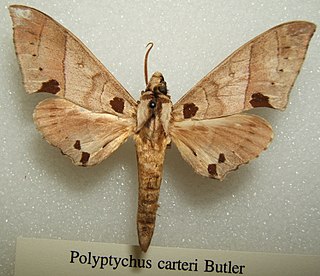
Polyptychus carteri is a moth of the family Sphingidae. It is known from lowland forests from Sierra Leone to the Congo and Uganda.

Polyptychus is a genus of moths in the family Sphingidae erected by Jacob Hübner in 1819. These middle-sized, light-brown moths are found in Africa and Southeast Asia.
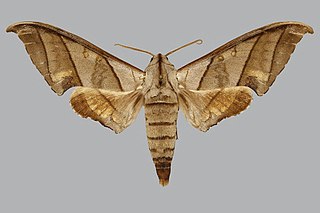
Polyptychus trisecta is a moth of the family Sphingidae. It is known from lowland forests from Liberia and Ghana to the Congo and western Uganda.
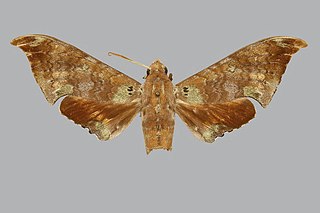
Polyptychus enodia is a moth of the family Sphingidae. It is present in Gabon and West Congo.

Polyptychus orthographus is a moth of the family Sphingidae. It is known from lowland forests from Sierra Leone to the Congo, Angola and Uganda.

Polyptychus bernardii is a moth of the family Sphingidae. It is known from Gabon, the Congo and from the Central African Republic.

Polyptychus anochus is a moth of the family Sphingidae. It is found from Sierra Leone to Nigeria and the Congo.
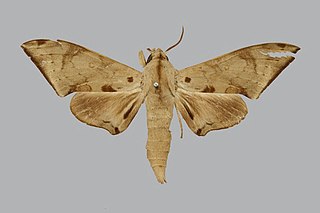
Polyptychus lapidatus is a moth of the family Sphingidae. It is found from Liberia to Ghana and Gabon.
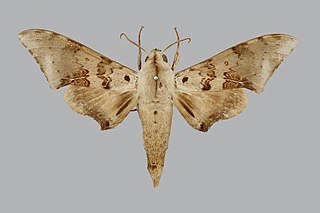
Polyptychus murinus is a moth of the family Sphingidae. It is found in places such as Liberia, Nigeria, Ghana, Cameroon, the Democratic Republic of the Congo, Angola, Ivory Coast and the Central African Republic. Their wingspan is an average of 7 cm.
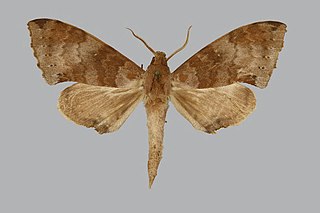
Polyptychus hollandi is a moth of the family Sphingidae. It is known from forests from Nigeria to the Congo.

Polyptychus andosa, or Coryndon's polyptychus, is a moth of the family Sphingidae. It is known from eastern and western Africa.
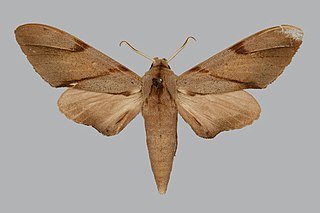
Polyptychus baxteri is a moth of the family Sphingidae. It is known from eastern and western Africa.

Polyptychus paupercula is a moth of the family Sphingidae. It is known from forests from Liberia to Uganda.

Polyptychus rougeoti is a moth of the family Sphingidae. It is known from Gabon.
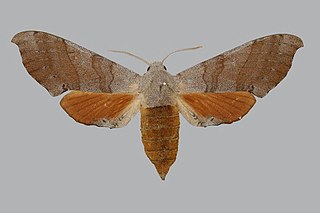
Polyptychus coryndoni is a moth of the family Sphingidae. It is known from Brachystegia woodland from Zimbabwe to Malawi, Zambia, the Democratic Republic of the Congo and Tanzania. It has also been recorded from northern Nigeria.

Polyptychoides grayii, or Gray's polyptychus, is a moth of the family Sphingidae. It is known from eastern Africa, south to South Africa.

Rufoclanis numosae, the wavy polyptychus, is a moth of the family Sphingidae. The species was first described by Hans Daniel Johan Wallengren in 1860. It is known from dry bush and arid savanna in much of eastern and southern Africa.

Polyptychus thihongae is a moth of the family Sphingidae. It is known from Gabon and the Central African Republic.

Polyptychus chinensis, the Chinese crenulate hawkmoth, is a moth of the family Sphingidae. It is known from China, Taiwan and the Ryukyu Archipelago.



















